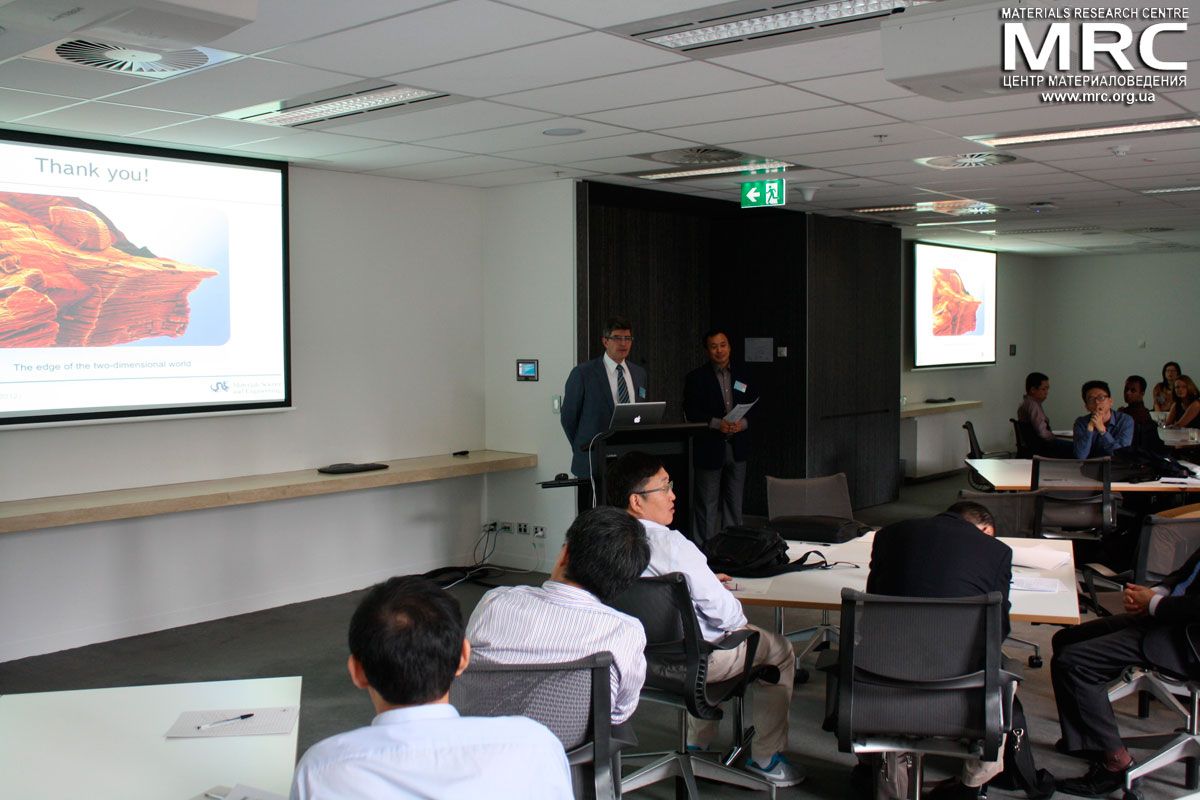
Symposium on Two-dimensional Nanomaterials 2015
10-11 March 2015, Melbourne, Australia
Two-dimensional (2D) nanomaterials, are emerging new class of nanomaterials with many fascinating properties and applications. This two-day event provides an ideal networking opportunity for researchers to communicate on their latest research.
The areas of focus for this meeting will include (but are not limited to) both advances in fundamental physics, chemistry, materials science, biology and computer modelling of 2D materials, including graphene, BN, MoS2 and transition metal dichalcogenides (TMDs) nanosheets, but also their applications in functional materials. Applications in areas of energy, the environment, nanomedicine and sensing are welcomed.
Professor Yury Gogotsi, Drexel University (USA) will give a Keynote Lecture at the Symposium on Two-dimensional Nanomaterials in Melbourne - "Two-Dimensional Carbides and Nitrides (MXenes): Synthesis, Properties and Electrochemical Applications" on Tuesday, March 10, 2015. Also he will give an invited talk at a post-conference Workshop at the Institute for Frontier Materials, Deakin University, Geelong, on "Capacitive Energy Storage Systems Utilizing Carbon Nanomaterials”.
Two-Dimensional Carbides and Nitrides (MXenes): Synthesis, Properties and Electrochemical Applications
Department of Materials Science and Engineering, and A. J. Drexel Nanomaterials Institute,
Drexel University,
Philadelphia, PA 19104, USA
gogotsi@.drexel.edu
Two-dimensional (2D) solids – the thinnest materials available to us – offer unique properties and a potential path to device miniaturization. The most famous example is graphene, which is an atomically thin layer of carbon atoms bonded together in-plane with sp2 bonds. Recently, an entirely new family of 2D solids – transition metal carbides (Ti2C, Ti3C2, Nb4C3, etc.) and carbonitrides – was discovered by Drexel University scientists.1,2 Selective etching of the A-group element from a MAX phase results in formation of 2D Mn+1Xn solids, labeled “MXene”. Eleven different carbides and carbonitrides have been reported to date.2-5 Structure and properties of numerous MXenes have been predicted by the density functional theory, showing that MXenes can be metallic or semiconducting (up to 2 eV band gap), depending on their surface termination. Their elastic constants along the basal plane are expected to be higher than that of the binary carbides. Oxygen or OH terminated MXenes, are hydrophilic, but electrically conductive. Hydrazine, urea and other polar organic molecules can intercalate MXenes leading to an increase of the c lattice parameter of MXenes.3 When dimethyl sulfoxide was intercalated into Ti3C2, followed by sonication in water, a stable colloidal solution of single- and few-layer flakes was produced. One of the many potential applications for 2D Ti3C2 is in electrical energy storage devices, such as batteries, Li-ion capacitors and supercapacitors.4,6 Cations ranging from Na+ to Mg2+ and Al3+ intercalate MXenes. Ti3C2 paper electrodes, produced by vacuum assisted filtration of an aqueous dispersion of delaminated Ti3C2, show a higher capacity than graphite anodes and also can be charged/discharged at significantly higher rates. They also demonstrate very high intercalation capacitance (up to 900 F/cm3) in aqueous electrolytes.
References
1 M. Naguib, et al, Advanced Materials, 23 (37), 4207-4331 (2011)
2 M. Naguib, et al, ACS Nano 6 (2), 1322–1331 (2012)
3 O. Mashtalir, et al, Nature Communication, 4, 1716 (2013)
4 M. R. Lukatskaya, et al, Science, 341, 1502-1505 (2103)
5 M. Naguib, et al, Advanced Materials, 26, 992-1005 (2014)
6 M. Ghidiu, et al, Nature, 516, 78–81 (2014)



Read more about Symposium on Two-dimensional Nanomaterials in Melbourne, March, 2015 on www.mrc.org.ua



